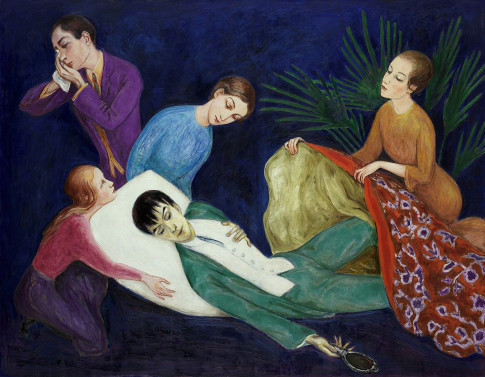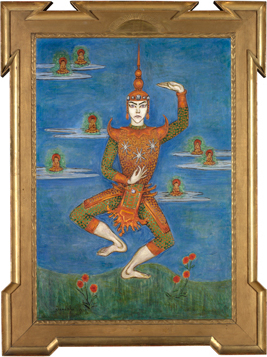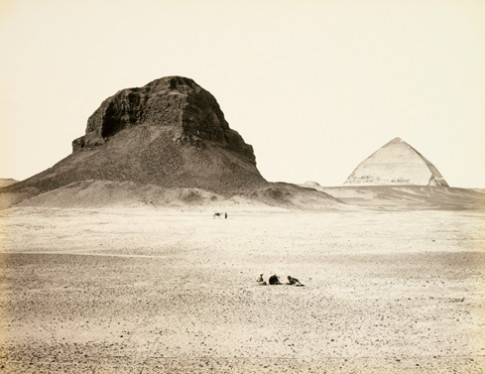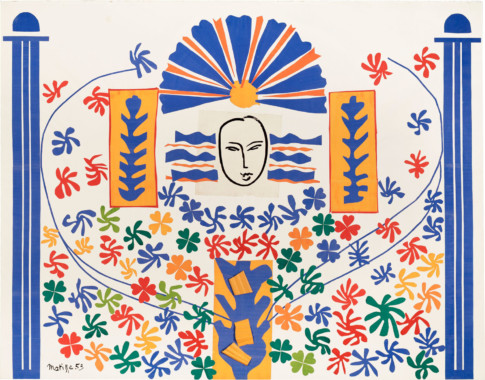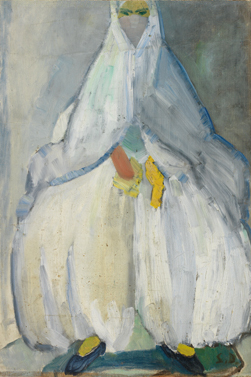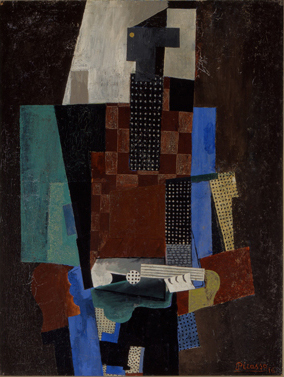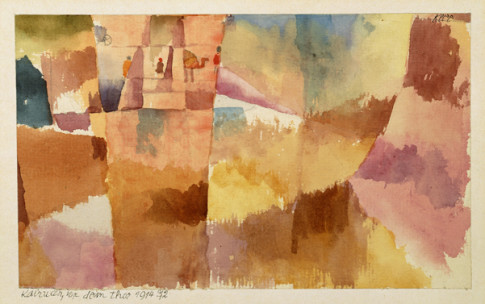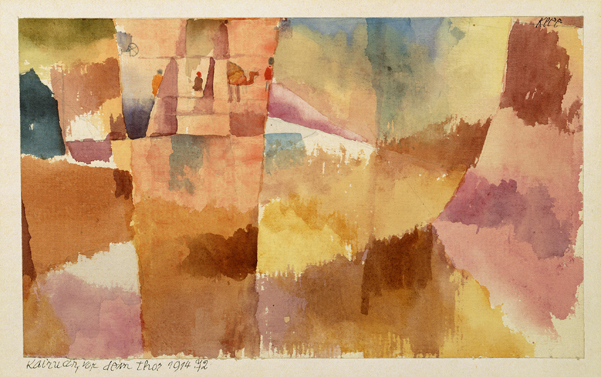
Paul Klee, Kairuan, vor dem Thor, 1914 © Moderna Museet
Paul Klee, Possessed by Color
Paul Klee often attested to how important the journey he made to Tunisia in the spring of 1914 together with August Macke was to his view of art. His encounter with the North African landscape and light came to transform his work with color and form. Klee brought home with him a series of watercolors in intensely luminous colors, including the Kairuan, vor dem Thor (Kairuan, Before the Gate).
In 1920 Klee was invited to teach color and form at the Bauhaus in Weimar, joining a faculty that included Walter Gropius, Wassily Kandinsky and Oskar Schlemmer. Studies of music, dance, and drama made up important elements of the Bauhaus curriculum, and composition analyses of Matisse’s painting La Dance became a recurring feature of Klee’s courses.
In 1928 Paul Klee traveled to Egypt and shortly thereafter he painted Stufen (The Steps). Impressions of the Nile landscape had been etched into his memory. Ten years later came Orientalisches Fest (Oriental Festival), in which white sails are juxtaposed against red earth and a fiery sun. In 1933 Klee was forced to leave Germany. A few years later about a hundred of his works were confiscated, condemned by Hitler’s regime as “degenerate art.”
In his final years Klee often painted on newsprint, as he did for example in auch einer dunkler bote (A Dark Messenger, Too). In the shadow of the outbreak of war and his increasingly failing health, Klee made a large series of works that included the “sign-paintings” that bear resemblance to hieroglyphs and other ancient notational systems.

